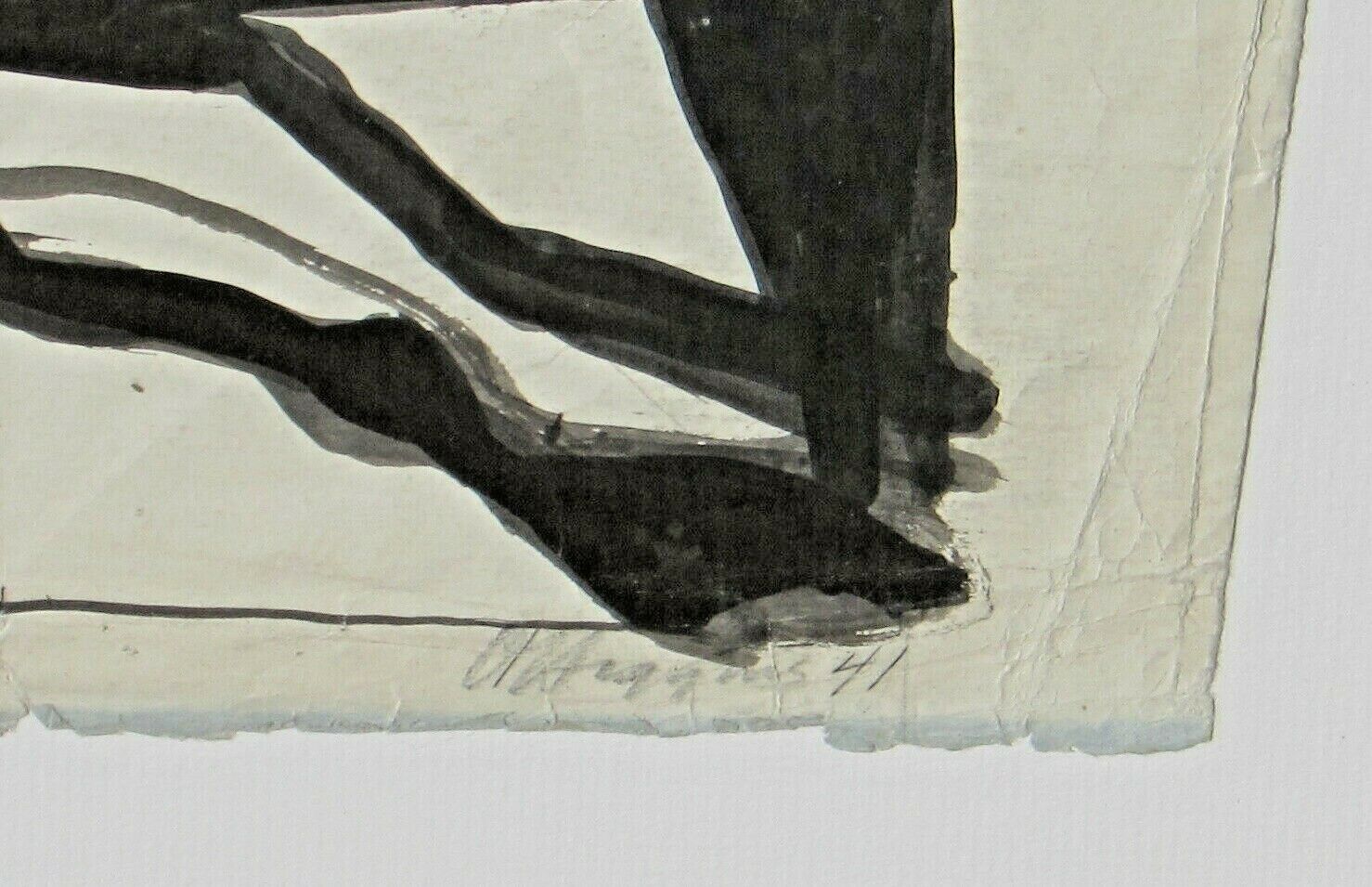-40%
Pablo O'Higgins Original Ink and pencil drawing "William Tell" 1941 TGP Archives
$ 369.07
- Description
- Size Guide
Description
PABLO O'HIGGINS (1904-1983). "William Tell" 1941, Ink and pencil drawing, 25" x 19" image size (framed size: 30-1/2" x 27-1/2") titled bottom center: "William Tell" and signed lower right: O'Higgins 41. The last owner states this was purchased from the archives of TGP (The Taller de Grafica Popular).The Taller de Gráfica Popular (The People’s Print Workshop), commonly known as the TGP, was established in Mexico City in 1937 by artists Leopoldo Méndez (1902–1968), Luis Arenal (1908–1985), Raúl Anguiano (1915–2006), and Pablo O’Higgins (1904–1983). The TGP was a collective center for the creation of sociopolitical art. Sharing the post-revolutionary idealism of the Mexican muralists, the TGP aimed to reach a broad audience, primarily through the dissemination of inexpensive wood- and linoleum-block prints. The group’s declaration of principles announced, “The TGP believes that, in order to serve the people, art must reflect the social reality of the times and have unity in content and form.”
Biography from Askart as provided by Art Cellar Exchange:
Pablo Esteban O'Higgins was born in Salt Lake City, Utah in 1904. As a young man O'Higgins began his art education in San Diego, California. During his time in Southern California O'Higgins became fascinated with the mural movement that was taking place in Mexico. His talent for the arts we quickly noticed by his contemporaries and at the age of 20 he was invited to assist Diego Rivera on mural projects within Mexico. This move to Mexico began the artist's permanent residence in the country that would later adopt him as a citizen.
During Pablo O'Higgins' time as Diego Rivera's primary assistant on mural projects, the young artist was privy to a hands-on education of modern Mexican art that proved to be of great influence for the rest of his life. After assisting on a few projects, O'Higgins and Rivera parted ways due to political differences and compounded by O'Higgins' desire to create his own work. O'Higgins continued to live in Mexico and soon founded the anti-Fascist
Taller de Grafica Popular
with Leopoldo Mendez (who was later implicated in the murder of Leon Trotsky.)
Taller de Grafica Mexicana
was created by O'Higgins and Mendez as a vehicle by which to promote the graphic arts and social conscience, to combat racism and to improve the lives of the underprivileged. The politics of the group were advertised through the subject matter of murals that O'Higgins created throughout Mexico as well as in his smaller easel paintings, such as
Descansando
.
Descansando
is a quintessential example of work by Pablo Esteban O'Higgins. The artist painted the people he respected, the ordinary, hard-working
campesinos
. In
Descansando
we see two farm workers resting from the mid-day sun. O'Higgins sought to capture the dignity and character of Mexico's working and indigenous people through his art and does just that in this mid-20th century painting.
While O'Higgins continued to live in Mexico, becoming a citizen of Mexico in 1961, he traveled back to the US on a few occasions. He created two murals in the United States, each in keeping with his politics. The first,
The Struggle Against Racial Discrimination
, was commissioned by the Shipscalers, Drydock and Miscellaneous Boatyard Workers Union in Seattle in 1945. In the mural, Abraham Lincoln is shown holding a banner that reads, "Uniting all working people of all nations," and in another panel, workers gather over a document that says, "Build a free world. No masters. No slaves. Workers of the world unite!" The mural has been moved and restored and is now installed at the University of Washington.
O'Higgins' other mural in the United States,
Solidaridad Sindical
, was commissioned by the International Longshore and Warehouse Union in Honolulu, Hawaii. This three-story mural celebrates the ascendancy of sugar plantation unions to power. Painted in the 1952 and still on view in the ILWU offices, this mural tells the story of oppression, struggle and victory of Hawaii's working people and serves as an inspiration to the ILWU members who improved working conditions through union representation. Both of these grand works promote union solidarity and empower the worker.
O'Higgins was the only non-native Mexican whose work was included in the first large exhibition of Mexican art in the Unites States,
Twenty Centuries of Mexican Art
, which took place at New York's MoMA in 1940. Following this ground-breaking exhibition, O'Higgins' work was included in major shows of Mexican art throughout the United States and England. The artist also received accolades from the Mexican government and was awarded with a retrospective of his work at
El Palacio de Bellas Artes
. His work was positively recognized because of his ability to capture the character of Mexico's working and indigenous people. The powerful and emotional lines in his canvases, murals and prints show the artist's admiration and love for Mexico and her people. In 1983 the artist died in Mexico City. His life was celebrated and his funeral was organized by
El Palacio de Bellas Artes
. Pablo O'Higgins is buried in Nuevo Leon, Mexico.
--Gretchen Van Camp
Director, Latin American Painting
Art Cellar Exchange
San Diego, California















